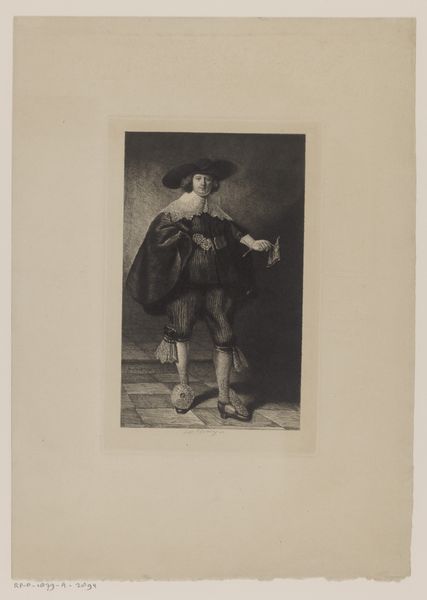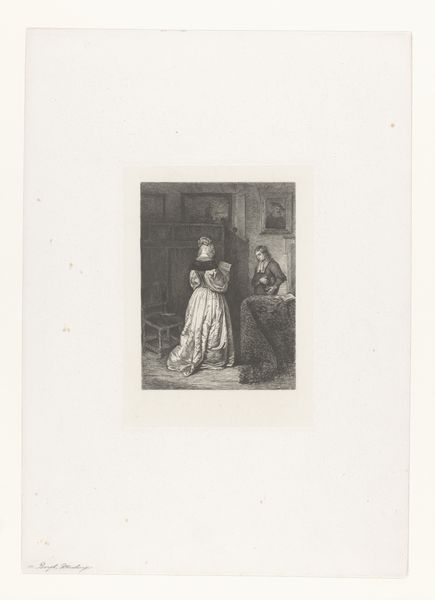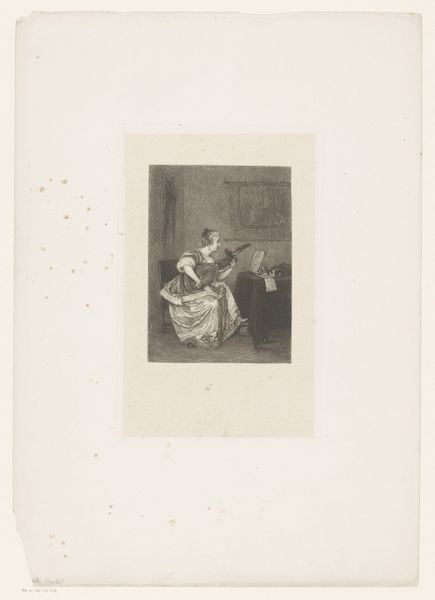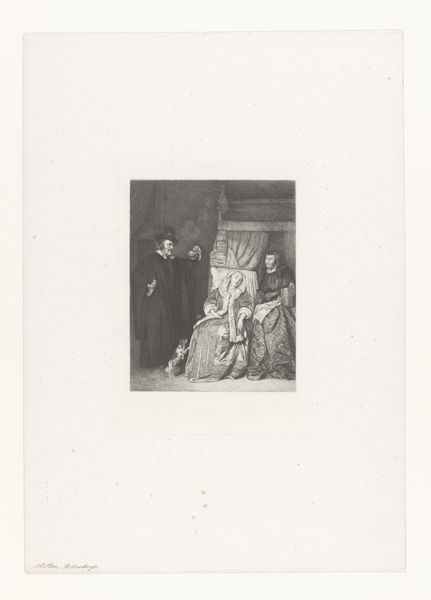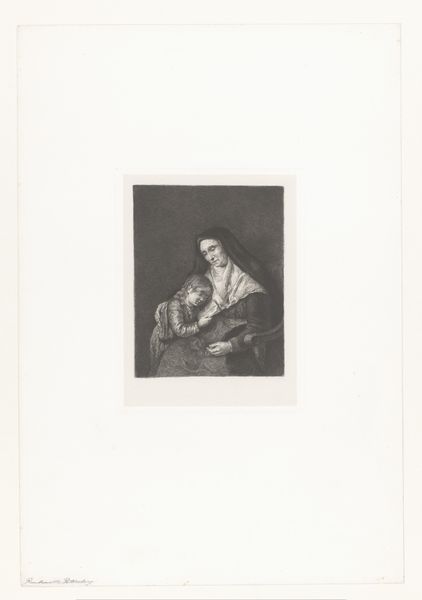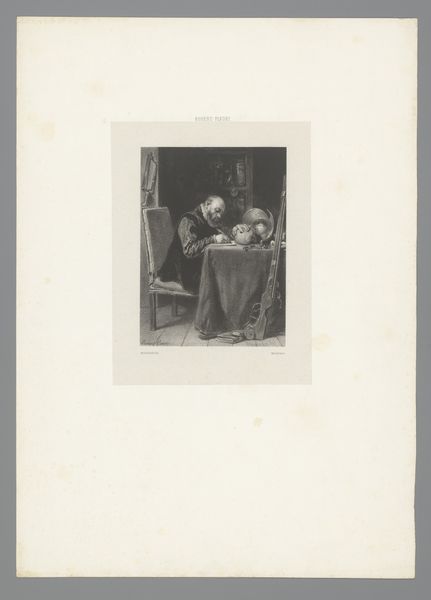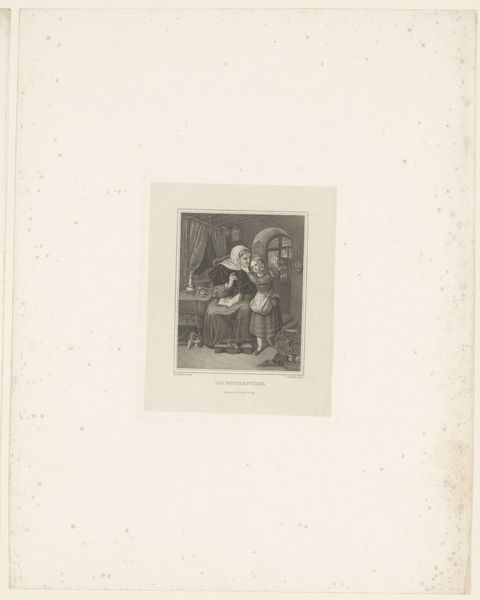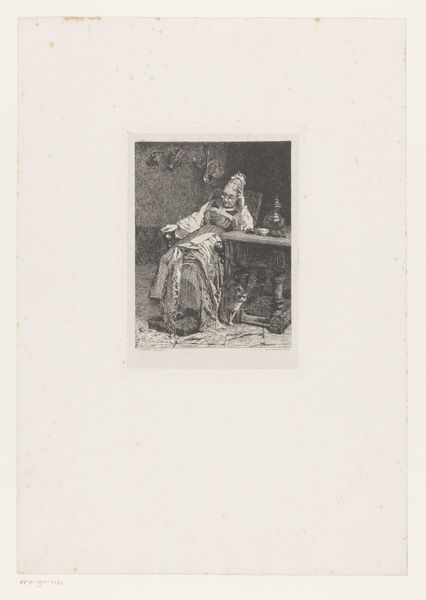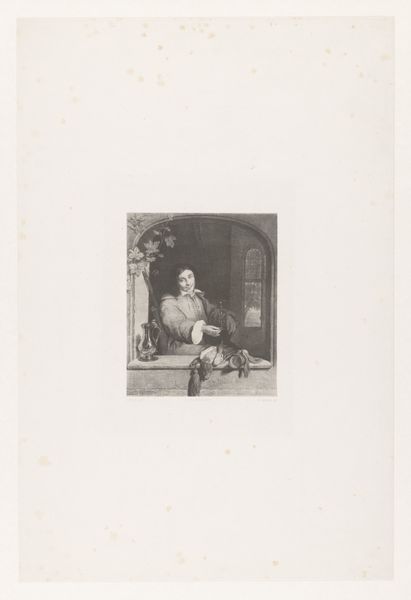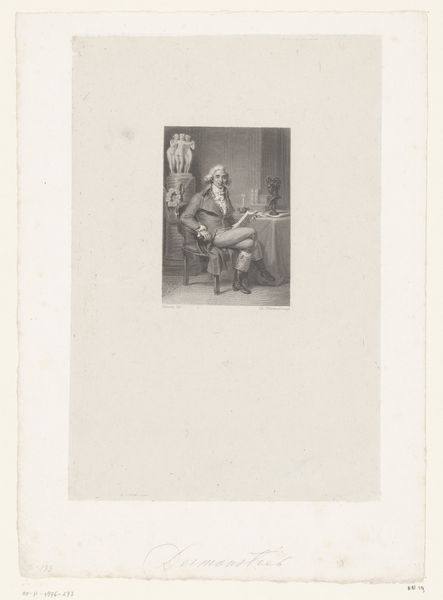
print, etching
#
portrait
# print
#
etching
#
genre-painting
#
academic-art
#
realism
Dimensions: height 545 mm, width 355 mm
Copyright: Rijks Museum: Open Domain
Curator: Welcome. Here we have "Portret van een geleerde," or "Portrait of a Scholar," created sometime between 1867 and 1874. The artist is Jan Mesker, and the medium is etching. Editor: My first impression is that it feels quite somber, a still moment captured with incredible detail, despite the monochromatic palette. There's something very controlled about the pose. Curator: It is remarkable how Mesker, through the printmaking process, manages to render textures: the scholar's clothes, the papers on the table, even the patterned floor. Considering printmaking was, at this point, a widespread mode of reproduction, this level of detail indicates the intense labor involved in crafting the plate itself. We see an echo here of older traditions adapted to this modern medium, giving greater access to this image through printing methods. Editor: And how fascinating is his clothing? The black hat, the elaborate ruff. It’s an intentional visual marker of status and knowledge. Consider how the table covering drapes, or how he is set slightly askew to it – like the still moments depicted in the work of Johannes Vermeer. Curator: I am immediately curious about the paper quality itself. Is it mass produced or a more bespoke stock meant for the collector rather than mass consumption? These things speak volumes. But what also cannot be discounted is this piece's ties to Academic Art of the era. Editor: The scholar’s intense, thoughtful gaze really carries weight. He seems deeply absorbed in thought, maybe contemplating the symbolic meaning embedded within the text or diagrams before him? His face is illuminated so that his inner life is broadcast externally – as it is on display to the audience in turn. Curator: Perhaps this work invites reflection on the material conditions required for scholarly work—the availability of printed materials, the financial means for acquiring them, and the social structures that support intellectual pursuits. Editor: An etching is almost inherently linked to the idea of duplication, but in many ways the visual experience has this amazing individual charge. These are symbolic acts, and these men often signify stability in turbulent times. It gives us insight into how scholars and intellectual work was viewed. Curator: Yes, ultimately a close look at this etching offers a fascinating window into the production of images and ideas in the 19th century. Editor: Agreed; considering both the man and how he is presented to us – it sparks some really potent associations about education, scholarship, and identity.
Comments
No comments
Be the first to comment and join the conversation on the ultimate creative platform.
